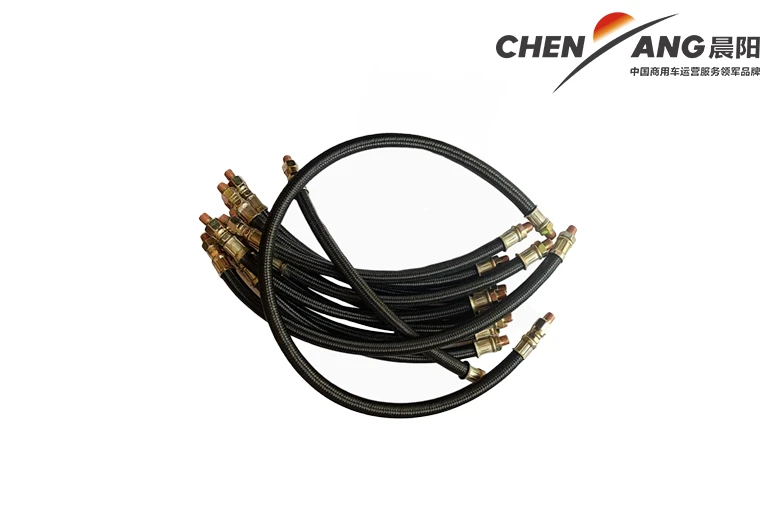types of concrete pumps
Types of Concrete Pumps An Overview
Concrete pumping is an essential technique in construction that allows for the efficient and effective placement of concrete. This is particularly crucial in large-scale projects where accessibility and speed are paramount. The concrete pump transforms the traditional method of pouring concrete into a more adaptable and controlled process. This article explores the different types of concrete pumps available in the market, their functionalities, and their specific applications.
1. Boom Concrete Pumps
Boom concrete pumps are among the most common types used in construction. These pumps consist of a truck-mounted boom arm that can extend and retract to positions that allow for precise placement of concrete. The boom can reach considerable heights, making these pumps ideal for large-scale construction projects such as skyscrapers, bridges, and multi-story buildings.
Boom pumps can be further categorized into different sizes based on the length of their arms, typically ranging from 20 to 60 meters. The ability to control the boom remotely allows operators to position the pump accurately while avoiding obstacles. This type of pump is particularly beneficial in urban areas where access to construction sites may be limited.
2. Line Concrete Pumps
Line concrete pumps, also known as trailer pumps, are portable units that can be towed to the job site. These pumps use a series of pipes to convey concrete from the pump to the desired location. Unlike boom pumps, line pumps are more versatile and economical, making them suitable for smaller projects or sites where the reach of a boom is unnecessary or impractical.
Line pumps are often utilized for residential construction, driveways, and smaller commercial projects. They can efficiently pump concrete over considerable distances, depending on the size of the pipes used. Operators often need to manually set up the pipes, but this flexibility allows for various placement options that are tailored to the specific constraints of the job site.
types of concrete pumps

Hydraulic concrete pumps leverage hydraulic pressure to move concrete through a pipeline system. This technology is advantageous because it allows for a consistent and efficient flow of concrete. Hydraulic pumps can be either truck-mounted or stationary units on construction sites. They are often used where large volumes of concrete need to be pumped, such as in foundation work, tunnels, and large surface areas.
One significant advantage of hydraulic concrete pumps is their ability to manage high-pressure requirements without compromising the integrity of the concrete mix. They are designed to handle thicker mixtures, which can be beneficial for specialized projects that require high-strength concrete.
4. Pneumatic Concrete Pumps
Pneumatic pumps utilize air pressure to transport concrete, making them suitable for lower-density mixtures. Although less common than hydraulic options, pneumatic concrete pumps are employed in specific applications such as shotcrete, where a mixture is sprayed onto surfaces to create structures or linings. This technique is often used in tunneling and slope stabilization projects.
The key advantage of pneumatic pumps is their ability to achieve a smooth and uniform application while minimizing material waste. However, they require a different type of concrete mixture that is designed for pneumatic delivery.
5. Specialized Concrete Pumps
Beyond the standard types, there are innovative and specialized concrete pumps designed for particular applications. These can include wet concrete pumps designed for the specific requirements of shotcrete applications or high-capacity pumps intended for use in massive infrastructure projects. There are also portable concrete pumps that allow for quick deployment in remote locations.
Conclusion
The choice of concrete pump is critical in determining the efficiency and success of a construction project. Factors such as the scale of the project, the type of concrete mix, and the layout of the construction site all play a role in selecting the appropriate pump. Understanding the various types of concrete pumps available—not only empowers construction professionals to make informed decisions but also enhances the overall effectiveness of the concrete placing process. As technology continues to advance, we can anticipate further innovations in concrete pump designs, expanding capabilities and improving outcomes in the construction industry.
-
SINOTRUK HOWO 84 Electric Dump Truck for Eco-Friendly Heavy HaulingNewsJul.26,2025
-
The Fast 16-Gear Manual Transmission Assembly for Heavy TrucksNewsJul.25,2025
-
Mercedes Benz Actros 1848 42 Tractor Truck for Sale - Reliable PerformanceNewsJul.24,2025
-
High-Quality Water Pump Assembly for Sinotruk Trucks – Durable & ReliableNewsJul.23,2025
-
Premium Truck Engine Antifreeze Coolant Fluid for Heavy Duty VehiclesNewsJul.22,2025
-
FOTON View G7 Mini Bus: Affordable & Spacious TransportNewsJul.22,2025
Popular products

























